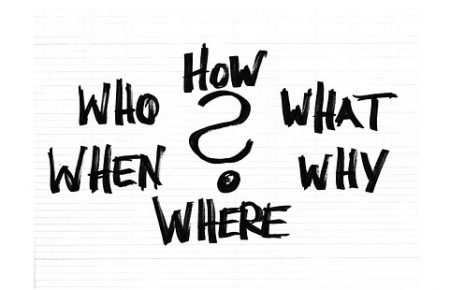In this second edition of the TOEIC strategy technique series, I will talk about Part 2 of the listening problem. Part 2 is a total of 30 questions. This is a problem in which a short conversation flows and the correct response is selected from options (A), (B), and (C). Since Part 1 was 10 questions, this time, it will be 30 times, which is three times higher. Let’s get started.
What kind of problem is Part 2?

It will be a little longer English, but let’s read the script of Part 2 explanatory text. If you can’t understand English before the problem, you might get impatient, but if you can see what is being said in advance, you can afford.
What is the content of the explanation?
You will hear a question or statement and three responses spoken in English.
(Listen to three questions or sentences)
They will not be printed in your test book and will be spoken only one time.
(Sentence is not printed and English is played only once)
Select the best response to the question or statement and mark the letter (A), (B), or (C) on your answer sheet.
(Choose the appropriate answer from (A) (B) (C) and mark it in the answer column)
The point is that the script of the voice that flows is not printed, only the answer is printed. You need to listen carefully because the audio plays only once.
Prepare responses for 5W1H questions

Part 2 includes many 5W1H questions. 5W1H means 5 W (What, Where, When, Who, Why) and 1 H (How). Part 2 will be easier to solve if you put in advance the patterns of answers to these as knowledge.
Please see this exercise
Where ’s the printed machine?
(A) next to the desk
(B) I’ll print it tomorrow
(C) by Friday (until Friday)
“Where ’s the printed machine?” Is not written in the test, so you need to listen and understand it. However, it is difficult to listen to everything all at once, so the goal is to hear only the first word where. If you can hear it, you can choose the answer to where, so the range of answers will be narrowed.
Answers to Where are In front of ~ (before ~), Near ~ (close to ~), Behind ~ (after ~), etc. Similarly, if the answers to what, when, who, why are gathered in advance, the number of drawers increases and you can find the answers easily. The following are the answer patterns.
Patterns for responses
Why—An answer comes with a reason
When—a specific date is coming
Who — name of person or position
What—It’s difficult to narrow down the scope of answers, but nouns are often the answers
(Example) what kind of project is he launching?
—A new marketing project
Knowing the answer pattern and not knowing will change the margin of your mind during the test, so be sure to prepare what kind of answer you expect in advance!
Practice listening

Next, I will introduce the practice method that I actually went to listen to 5W1H.
Step 1
Listen to Part 2 on the TOEIC Listening CD and practice to make sure you can hear only the first word.
5W1H always comes at the beginning of the text. In other words, if you can hear the first word, you can get 5W1H. This is also an actual TOEIC listening practice, so let’s try this practice first.
Step 2
Prepare listening materials other than TOEIC, listen to a long sentence, and practice to grasp 5W1H. In other words, you listen to long sentences and practice to listen to when and who did what.
This practice is not only Part 2 but also a long listening skill, and it is an applied practice that can improve overall listening skills.
When I was at the TOEIC 500 mark, I practiced Step 1 15 minutes a day, 1 month a day, Step 2 practice 20 minutes 2 months a day, and received a TOEIC score of about 50 listening parts It has risen!
Practice understanding the listening questions

The feature of Part 2 is that the flowing voice is a very short sentence. Although it is short and easy to understand, if you miss an important word, you will not be able to arrive at the answer.
Listening after separating
So, what I did was training to listen to long sentences. You can practice any audio, but text that is read at natural speed, such as shadowing text or CNN news listening, is recommended.
Easy way. They listen to the long sentences that are recorded with these CDs separated by one sentence. Make sure to listen to all the points instead of separating them. You can watch the script before you get used to it. This training allows you to concentrate on listening to all short sentences in your ears and to process English sentences in a short time.
Recommended youtube
I used CNN listening. https://youtu.be/ZmkYP1P47SI
This is a youtube video, but you can also purchase text at bookstores. I think that it will be quite difficult at first, but if you look carefully at each sentence, the difficulty of writing is not so high, and if you get used to natural speed, TOEIC listening might feel easier.
Conclusion

1. Learn 5W1H answer patterns
2. Practice listening to the first word
3. Increase your ear concentration by separating long sentences
The above three are the training I have done. Listening issue Part 2 where you do not want to reduce the score as much as possible. Let’s take good measures and aim for a high score!










































Leave a Reply